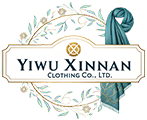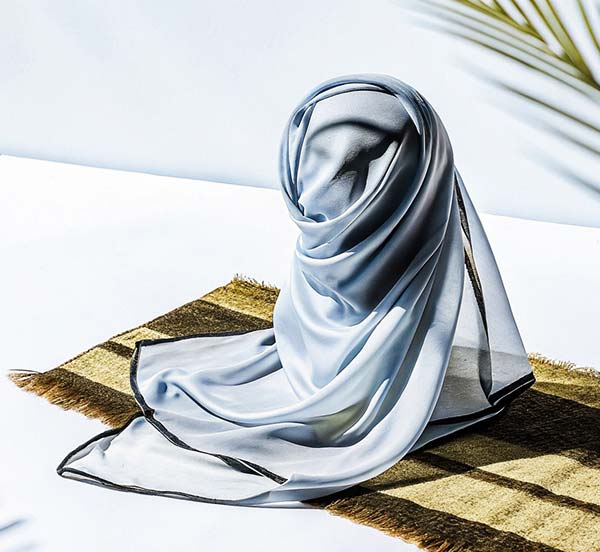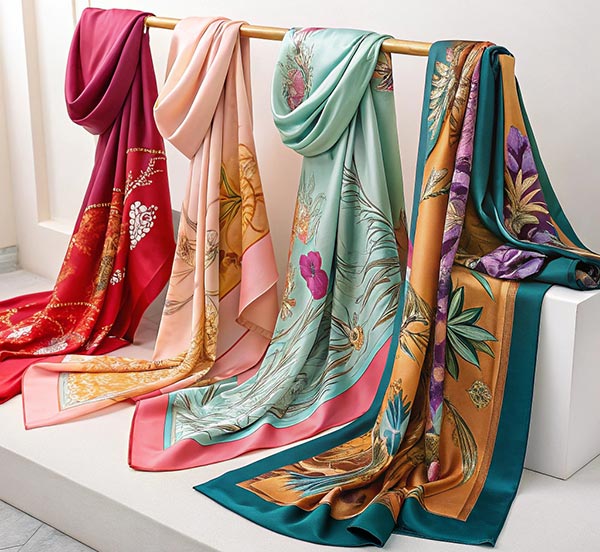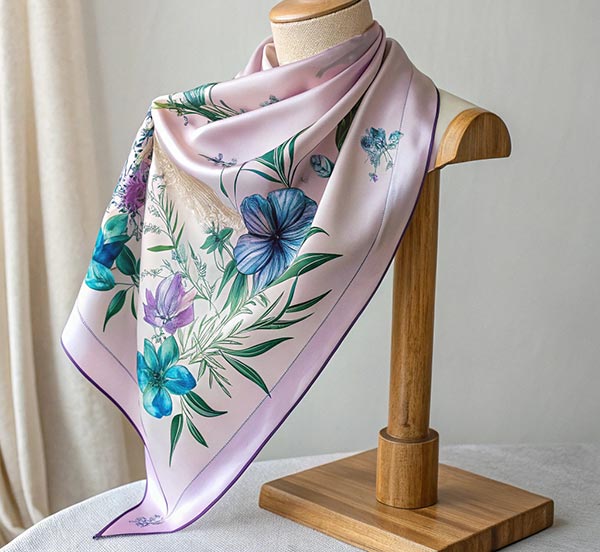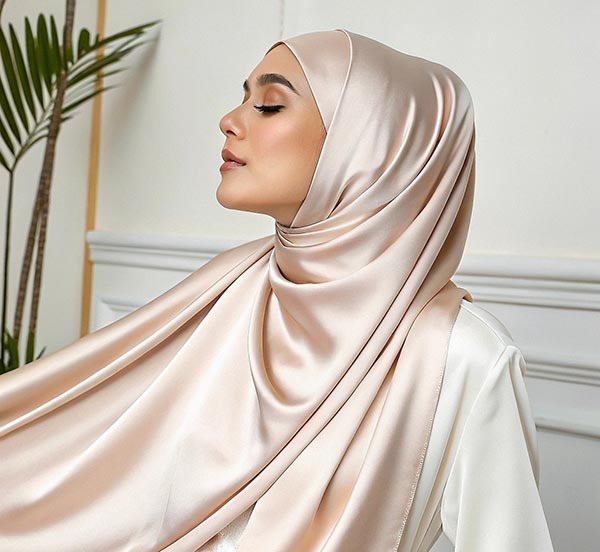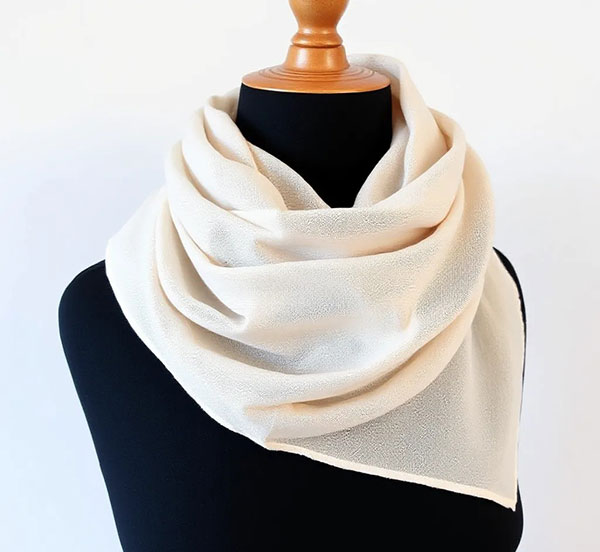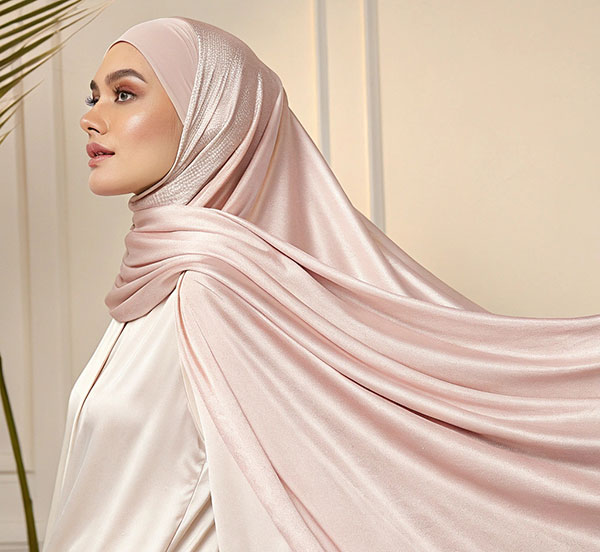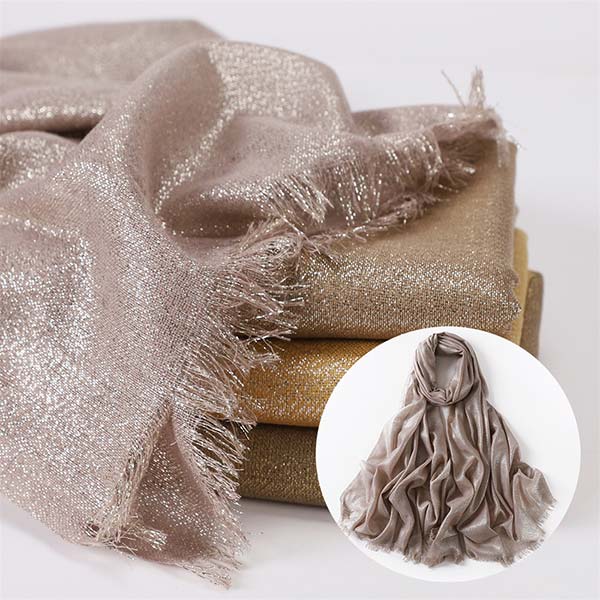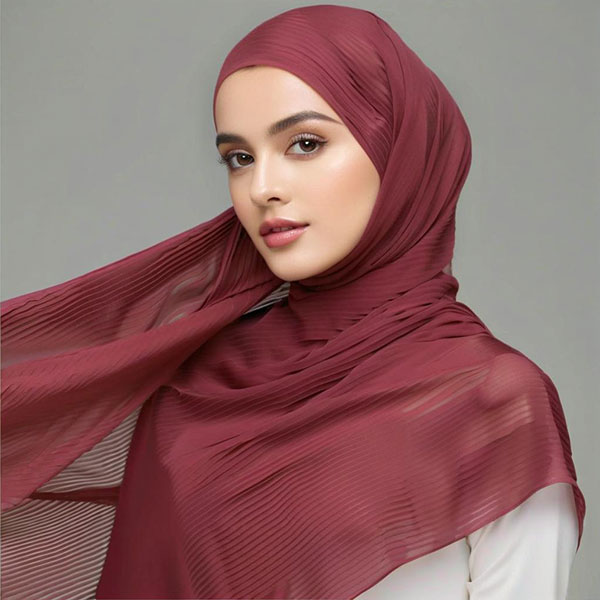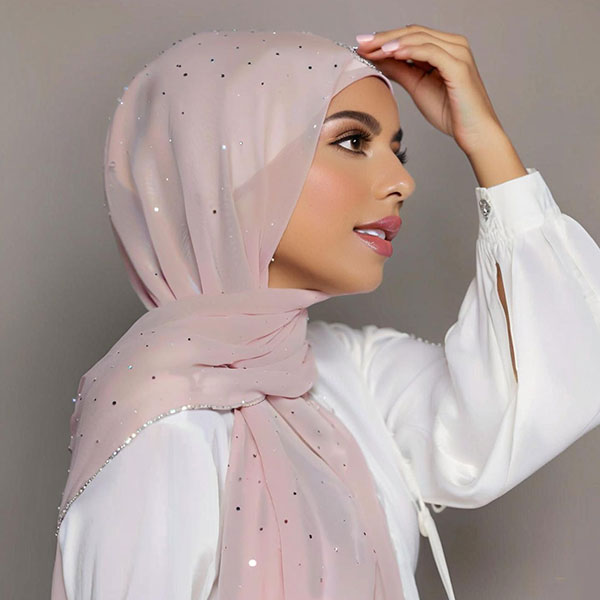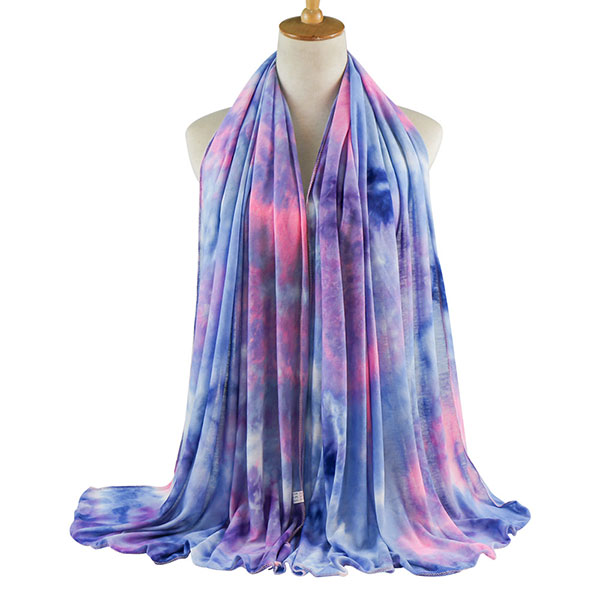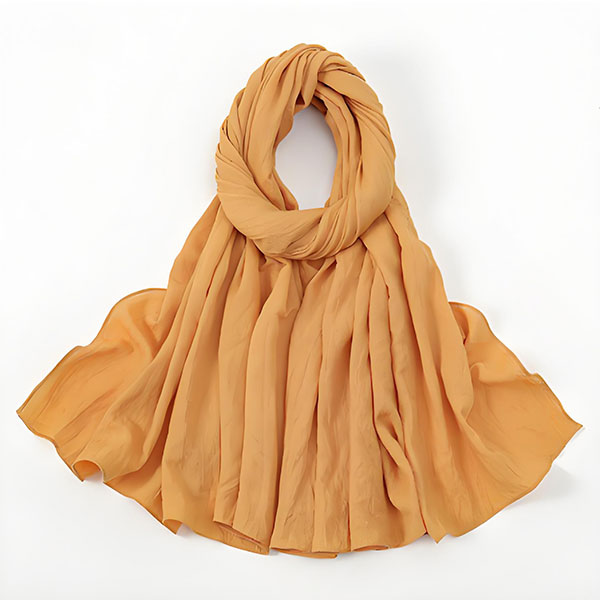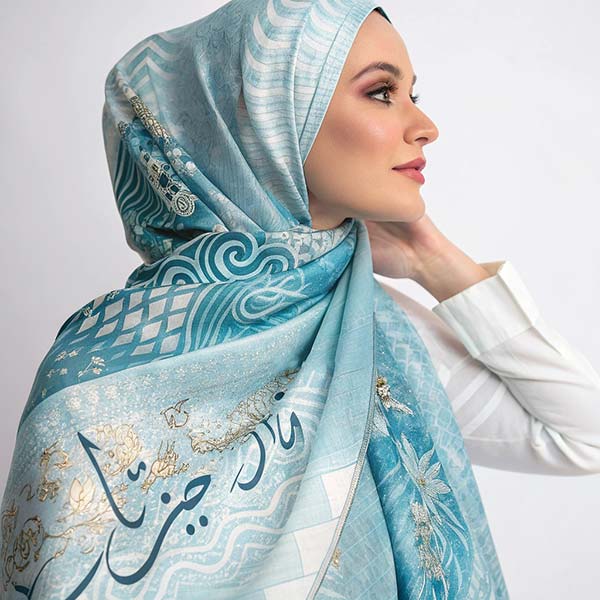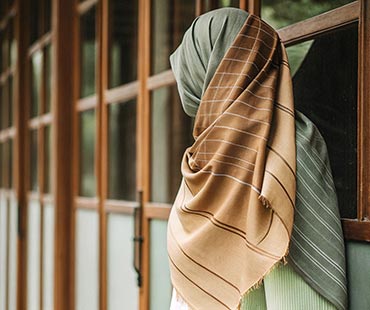Hijab come in a variety of materials, from lightweight cotton and silk to heavier wool and cashmere. Next, we will discuss the main fabrics used in hijabs.
1. Silk, Silk Blends and Blends
Silk is one of the most popular textiles used in the production of hijabs, as it is light and soft, making it perfect for wrapping around the head. Silk scarves tend to be more expensive than other fabrics because of their luxurious qualities. You can also find silk blends that are mixed with other fabrics such as wool, cotton or polyester. These blends offer the same softness as silk, but with extra warmth and breathability.
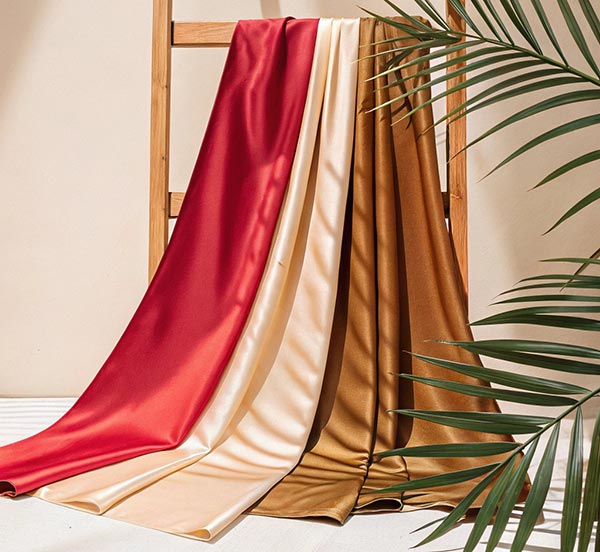
2. Polyester
Polyester is a synthetic material known for its durability and affordability. It is often blended with natural fibers such as cotton or wool for added strength and warmth. Polyester scarves are lightweight and low-maintenance, which means they don’t need to be dry cleaned like some natural fiber scarves, making them an excellent choice for everyday wear.

3. Cashmere Blends
Cashmere combines luxury and comfort. It’s incredibly soft and lightweight while still being warm, making it perfect for cold weather. Cashmere-blend turbans often contain some other textile (such as silk or polyester) to keep costs down, but still provide a soft cashmere feel.
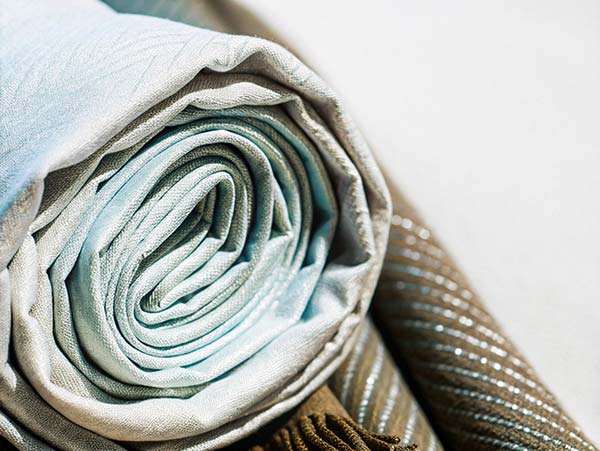
4. 100% Modal
Modal is a rayon fabric made from beech trees that is becoming increasingly popular due to its ability to absorb moisture while remaining strong and lightweight. Modal hijab fabric feels smooth against the skin; moreover, it has a nice sheen that gives it an elegant look without being too flashy. Although 100% modal hijabs may be more expensive than synthetics or blends, they are more durable if cared for properly.

5. Modal Blend
Modal blend hijabs are similar to 100% modal scarves, but contain some other textiles (such as silk or polyester). This combination allows the Modal Blend Scarf to maintain its strength while providing additional warmth and breathability based on the blend of Modal fabrics.
6.100% Viscose Fiber
Viscose fiber is another type of rayon fabric that is becoming more and more common due to its affordability and versatility. In addition, its lightweight nature makes it ideal for scarves! Viscose fibers hold moisture well, so if you’re looking for something that’s softer than polyester but still affordable, viscose may be your best bet! Just be sure to keep your bandana safe, as viscose fibers are prone to mold and mildew.
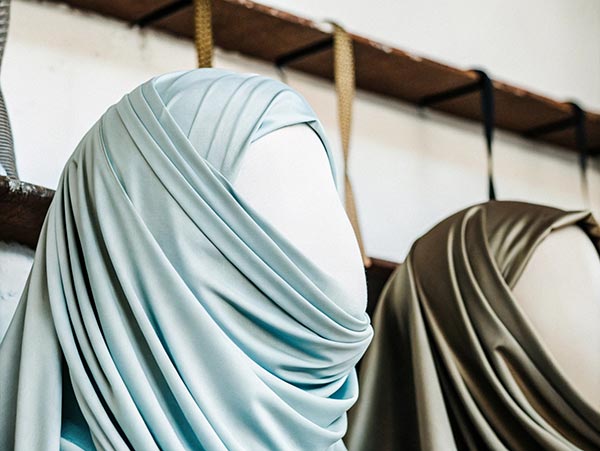
7. Cotton
Cotton is probably one of the oldest textiles used in the production of bandanas because it’s inexpensive and breathable; in addition, it’s hypoallergenic, making it suitable even for sensitive skin! Cotton is also more durable than other fabrics when exposed to high temperatures (e.g. summer). However, since cotton isn’t waterproof, you may need something else if you’re wearing a scarf outdoors in wet conditions!
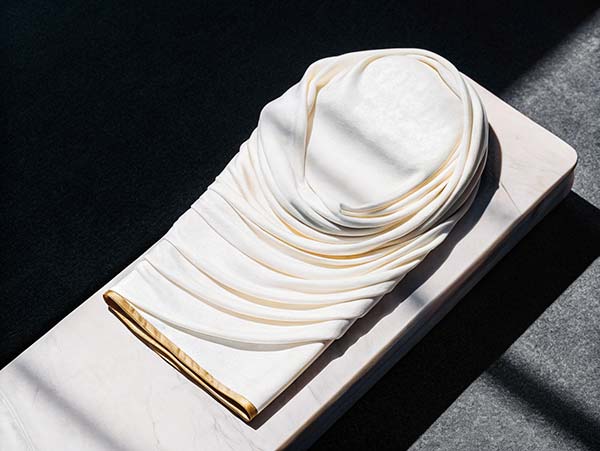
8. Wool and wool blends
Wool offers unrivaled warmth compared to other fabrics, but can sometimes feel bulky against your skin unless it’s blended with something like silk or polyester, which helps to reduce the weight while still protecting against frigid temperatures! Wool blend turbans tend to be more expensive than synthetics, but will last longer if cared for properly – avoid washing them too often as this can cause them to shrink over time!
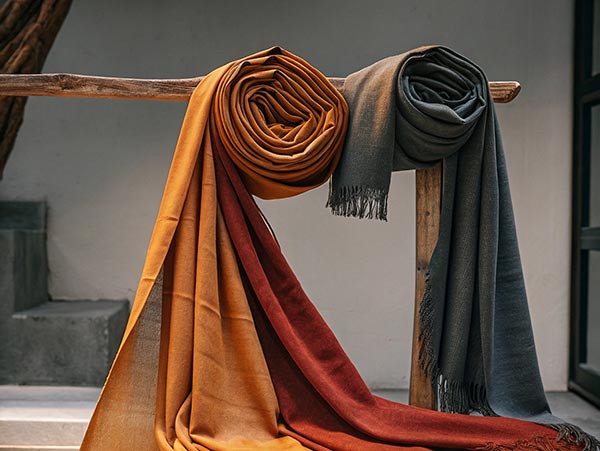
We offer a wide variety of hijab materials and types to choose from, so you can find the one that best suits your needs. Whether you’re looking for something luxuriously soft, like silk or cashmere, or something affordable and durable, like polyester, we’ve got you covered! So be sure to browse our selection today to find the best type of scarf for your unique style.
